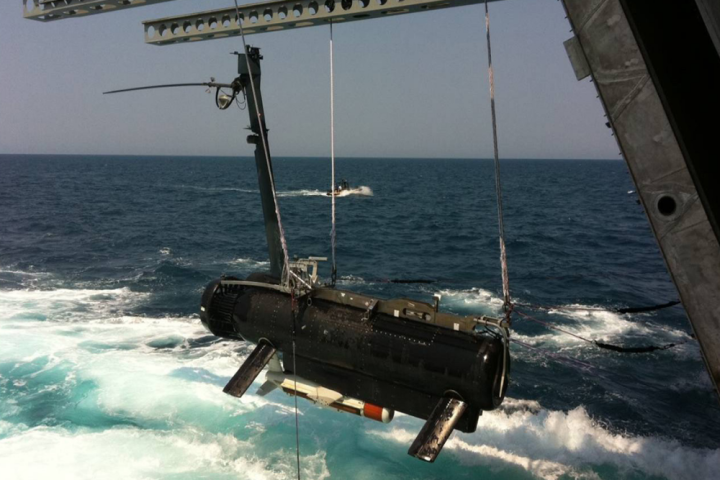
Developed and researched over the course of the last 16 years by the defense tech gurus over at Lockheed Martin, the RMS figured to become a staple of the U.S. Navy’s vessel fleet. Ideally, a fully operation RMS drone would launch from one of the Navy’s littoral combat ships armed with sonar it would use to search for explosives. As the drone operates through potentially mine-filled waters, it would communicate locations of detected mines to nearby ships allowing them to navigate the waters accordingly. Emphasis squarely on ideally, however.

In reality, the RMS is nothing more than an expensive piece of technology which could be more accurately described as a lemon. Over the course of its development, consistent testing revealed a notable lack of improvement regarding the system’s reliability. Tests done during September of 2014 showed a regular inability to identify and destroy underwater explosives, a conclusion which was corroborated with testing done this past August.
“Recent development testing provides no statistical evidence that the system is demonstrating improved reliability, and instead indicates that reliability plateaued nearly a decade ago,” said the director of Operational Test and Evaluation, Michael Gilmore in an August 3 memo. “[The drone] cannot be reliably controlled by the ship or communicate when it is operating out of the line-of-sight of the ship, and the towed sonar cannot detect mines consistently.”
Furthermore, additional information in the memo showed the RMS to only have the ability to operate reliably for roughly 25 hours before it began to falter — falling drastically short of the required 75-hour threshold. Despite the inherent controversy of continued failure (and harsh criticism from lawmakers), Lockheed Martin says it’s still confident in its system and trusts its effectiveness.

“Lockheed Martin continues to work closely with the U.S. Navy on the Remote Minehunting System mission package, which remains the most advanced method of mine-hunting available in the U.S. fleet,” said Lockheed Martin spokesperson Joe Dougherty. “We remain confident the RMS is the most mature system to identify and destroy mines in challenging conditions without putting sailors or high-value capital ships at risk in a minefield.”
The RMS’ next round of testing is already scheduled for early 2016 as the Pentagon’s undersecretary of defense for acquisition Frank Kendall plans to give the tech a comprehensive review. Though unless it begins to show marked improvement in reliability and accuracy, it’s safe to assume the system won’t be making much of a splash for the U.S. Navy anytime soon.
Editors' Recommendations
- U.S. Air Force’s secretive space plane bags prestigious aerospace award
- SpaceX and United Launch Alliance win launch contracts for U.S. Air Force
- The U.S. Air Force’s secretive space plane ends record-breaking mission
- U.S. Army takes its pocket-sized reconnaissance drone to Afghanistan
- U.S. Navy is working on making its fleet invisible to computerized surveillance


